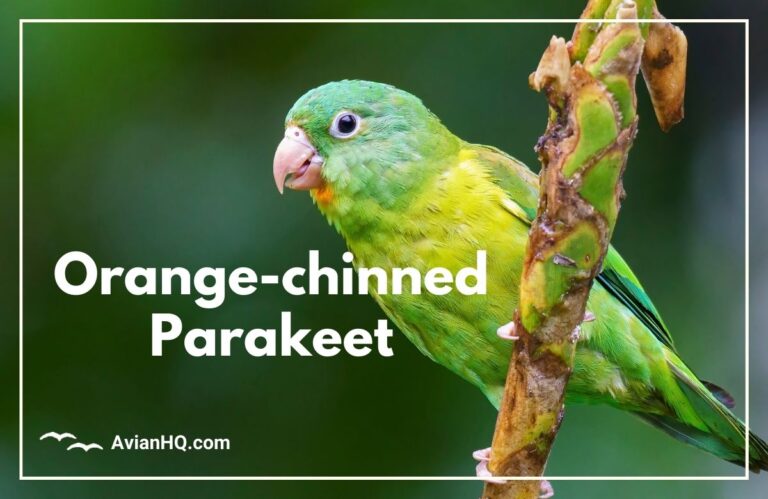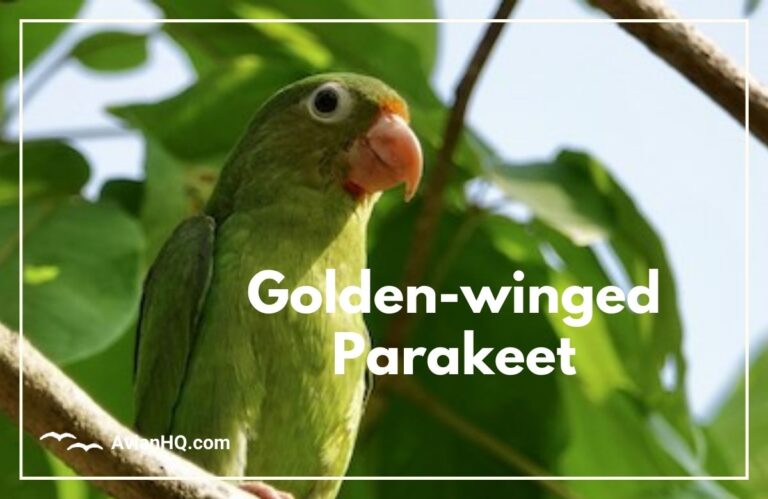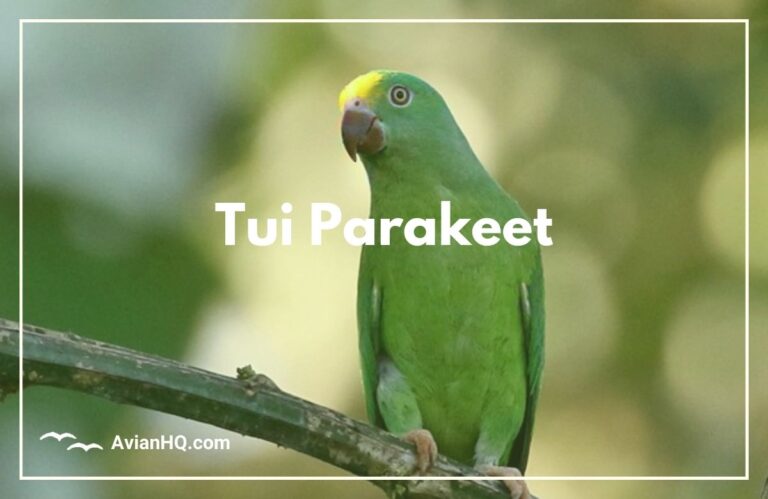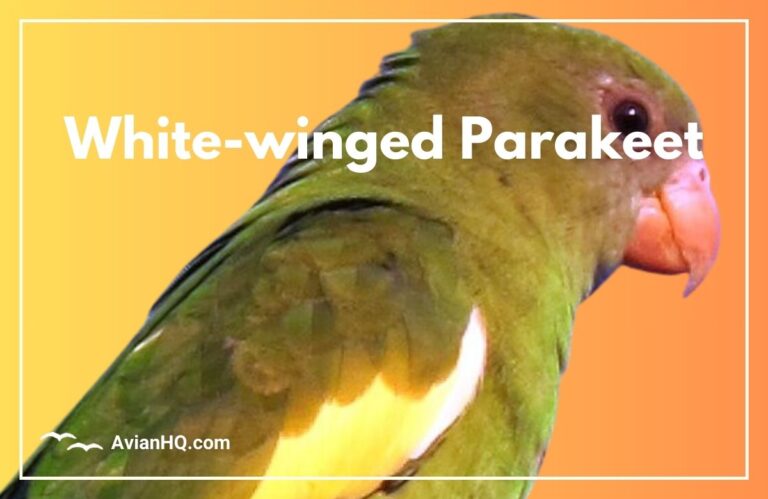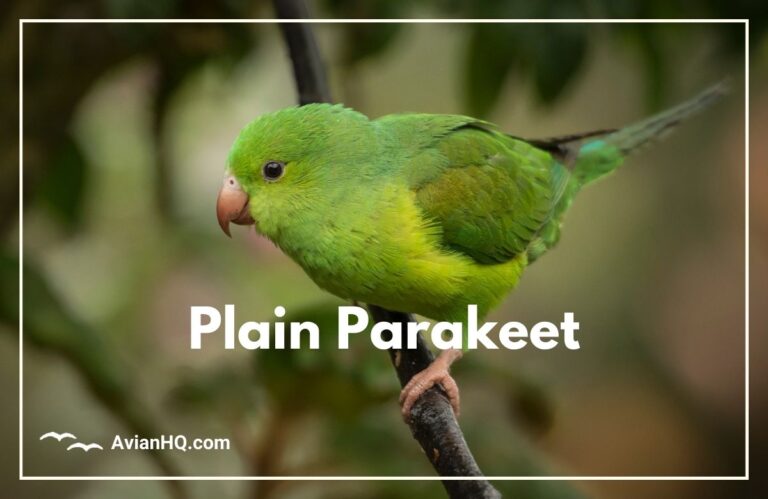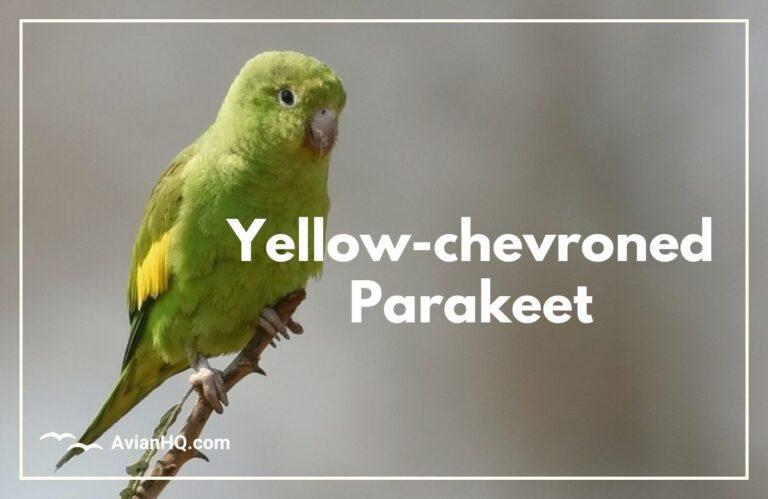Cobalt-winged Parakeet (Brotogeris cyanoptera)
Have you ever seen a small, bright green parrot with vivid blue wings flying through the trees? If so, you may have spotted the Cobalt-winged Parakeet (Brotogeris cyanoptera), a beautiful little bird native to Brazil. Though small, measuring about 9 inches (22 centimeters) long and weighing just 2.5-3 ounces (70-85 grams), this parakeet makes up for its tiny stature with its stunning plumage.
When you glimpse a flash of cobalt blue beating through the air, you’ll know a Cobalt-winged Parakeet flock is near. These parrots live in small, chatty groups ranging from 6 to 30 birds in their native woodlands and forests. They use their strong, black beaks to crush open palms and other fruits to reach the nutritious seeds inside.
“The Cobalt-winged Parakeet gets its name from the male’s bright blue wing feathers, which offer a dazzling contrast against vivid green body plumage.”
Though still widespread in its original range in Brazil, habitat destruction and the illegal pet trade pose threats to the future of this beautiful species. By learning more about this little parrot, you can help spread awareness about its conservation.
This article will tell you all about the natural history of the Cobalt-winged Parakeet:
- Where it lives in the wild
- What it eats
- How it breeds and raises chicks
- Its behavior and interactions with other species
- Conservation efforts and threats it faces
So get ready to meet this vividly-colored parrot!
History and Taxonomy
The story of the Cobalt-winged Parakeet dates back to 1824, when a German naturalist named Johann Baptist von Spix first discovered the species near Rio de Janeiro during an expedition to Brazil. Enchanted by its bright plumage, he gave it the scientific name Brotogeris cyanoptera, derived from Latin words meaning “blue wings.”
This species belongs to the diverse parrot family Psittacidae, specifically within the long-tailed parakeet subfamily Arinae and tribe Arini. Of the over 350 species of parrots globally, the Cobalt-winged Parakeet belongs to a genus called Brotogeris. There are about 8 species of Brotogeris, but the Cobalt-winged is the most brightly colored and striking of its relatives.
There are two recognized subspecies of the Cobalt-winged Parakeet:
- Brotogeris cyanoptera cyanoptera – The nominate subspecies described by Spix, found across southeastern Brazil
- B. c. tirica – Native to parts of northeastern Brazil, exhibits brighter overall green plumage with more blue in the wings
So the next time you come across this eye-catching little parrot, you’ll know a bit of its backstory as the cobalt-winged beauty described by Spix nearly 200 years ago!
Physical Appearance
The Cobalt-winged Parakeet is a small, stocky parrot measuring about 9 inches (22 centimeters) long. It is relatively short-tailed compared to some parakeets. These compact birds are lightweight, tipping the scales at just 2.5-3 ounces (70-85 grams).
True to its name, the male Cobalt-winged Parakeet sports brilliant cobalt blue flight feathers on its wings, which are prominently displayed when flown. The rest of its plumage is a bright, vivid green across most of its body and head. It has yellowish thighs and bluish-green undertail coverts. The female is similar with slightly duller blue wings.
Both sexes have a short black bill and white eyerings surrounding their brown irises. Their facial area is featherless and grey in color. Legs and feet are greenish-grey.
The B. c. tirica subspecies native to northeastern Brazil is even more vibrant, with richer green body plumage compared to the nominate subspecies. Its wings have more blue that extends across the back and belly.
When seeing these colors contrasted against dark green tropical forests, you’ll appreciate why the Cobalt-winged Parakeet has captivated people with its beauty since its discovery.
Habitat and Distribution
The Cobalt-winged Parakeet is endemic to the lush, humid forests of eastern Brazil. Its native range stretches along the southeastern Atlantic coast and inland across parts of northeastern Brazil.
Within its homeland, these parakeets frequent a variety of wooded habitats including tropical and subtropical moist forests, swamps, woodlands, and plantations. You’re likely to spot the green and blue blur of their wings in mature trees along forest edges or clearings.
Cobalt-wingings reside across elevations ranging from sea level up to 3,000 feet (915 meters) high. At higher elevations, they inhabit cloud forests rich in colorful orchids and bromeliads.
Though eastern Brazil is the only native home of truly wild populations, other regions have introduced feral Cobalt-wings. Escapees have formed breeding colonies in areas like Hawaii, Puerto Rico, Florida, and California. There is even a tiny colony in Singapore originating from an aviary escape in the 1980s.
So if you’re traveling anywhere within the species’ native or introduced range, listening for the characteristic shrill “chi-chi-chi” calls of Cobalt-wings may lead you to sightings of the birds themselves!
Diet and Feeding
The Cobalt-winged Parakeet is primarily herbivorous, feeding on a variety of seeds, fruits, berries, buds, and nectar. Their strong black beaks allow them to crack into fruits and extract the highly nutritious seeds within.
This species forages for food in small, chatty flocks of 6 to 30 individuals. You’re likely to find them feeding on palm fruits like acai and jussara, selecting the ripest fruits directly from the trees. They also enjoy tropical fruits like bananas, papaya, and passionfruit when available.
Cobalt-wings supplement their fruit- and seed-based diet with other vegetation like buds, leaves, and edible flowers. Favorites include cecropia and banana plants. Nectar from bottlebrush and eucalyptus blossoms provides handy energy.
In the introduced range, these adaptable eaters utilize food sources like coconuts, guavas, figs, and even cactus fruits. You may catch sight of their green bodies balanced on cactus pads as they extract the sweet pulp.
At cultivated fruit farms and gardens, the Cobalt-winged Parakeet’s hearty appetite lands it in conflict with human interests. But their feeding behaviors help disperse seeds through forests and pollinate tropical flowering plants.
Breeding and Reproduction
The breeding season for Cobalt-winged Parakeets depends on their range, aligning with peak regional food availability. In their native Brazil, most mating and nesting occurs between September to December or February to April.
Though paired birds roost together year-round, spring triggers more intense bonding activities like allopreening (grooming) one another. The female then chooses a suitable nest cavity, typically a hole 15-30 feet (5-9 meters) up in a tree trunk or palm fronds.
Clutches contain 3-4 round, matte white eggs measuring roughly 0.9 inches (24 mm) long. Only the female incubates the eggs, keeping them warm for around 23 days. Once hatched, both parents share feeding duties as the helpless chicks grow feathers and build strength. Young fledge at 6-7 weeks old.
By 9 months old, juvenile Cobalt-wings reach sexual maturity and seek their own mates. Pairs can raise multiple broods per year. With each successful breeding cycle, more vividly plumed parakeets may soon beat cobalt wings through Brazil’s forests!
Behavior and Ecology
The Cobalt-winged Parakeet is a highly social species, spending most of its time in the company of other vibrantly colored birds like themselves. You’ll most likely observe them in small flocks of 6 to 30 individuals foraging, flying, or roosting together.
They move efficiently between locations, flying swiftly in direct lines using rapid, shallow wingbeats. Their blue flight feathers create flashes of color shooting through the green forest canopy. Listen for the characteristic shrill “chi-chi-chi” contact calls they use to coordinate flock movements.
At dusk, groups congregate at favorite roosting cavities, often choosing the same tree hollows night after night. Many may cram together into a single hole, lining the interior with leaves for comfort. The security of the flock helps detect predators and defend prized roost sites.
Though very vocal towards flock members, Cobalt-wings generally avoid conflict with other species. They may compete with parakeets like maroon-bellies for nest sites but don’t exhibit aggression. You might catch them foraging alongside tanagers, toucans, or guira cuckoos.
With strength in numbers, vibrant social bonds, and adaptable habits, this little Brazilian parrot continues to flourish, delighting observers with flashes of green and blue.
Conservation Status
Thanks to large, widespread populations of over 1 million across Brazil, the Cobalt-winged Parakeet has a conservation designation of Least Concern by the International Union for Conservation of Nature (IUCN).
Its natural range still includes extensive areas of humid primary and secondary forests. Feral populations in the introduced range like Puerto Rico and Hawaii are also self-sustaining through breeding and face no major shortages of food or habitat there.
However, experts have noticed decreasing wild Cobalt-wing numbers in recent decades largely due to rising deforestation. Logging, agriculture, and expanding human settlements have accelerated loss of breeding grounds. Over-harvesting of palm trees for hearts-of-palm and other uses may indirectly limit vital food sources as well over the long term.
The vibrant colored plumage and vocal nature of these parakeets have fueled demand for the illegal wild pet trade both at home and abroad. Trapping of Cobalt-wings persists across parts of Brazil.
Protected reserves now secure some wild populations and confiscated, rehabilitated birds have been successfully re-wilded. But continued habitat preservation efforts are crucial for the future survival of Cobalt-winged Parakeets roaming Brazil’s forests.
Cultural Significance
The brilliant plumage and vocal exuberance of the Cobalt-winged Parakeet have captivated people since the species was first documented by Western science in 1824. Its common name pays homage to the dazzling cobalt blue hue gracing the wings of the male.
Many indigenous groups across Brazil likely knew of the parakeet’s existence long before its formal discovery. Some may have kept vibrant individuals as pets or incorporated their bright feathers into ceremonial accessories and garb.
Today, the Cobalt-winged Parakeet remains a favorite among aviculturists around the world thanks to traits like its stunning colors, ability to mimic sounds, and overall hardy constitution. Captive breeding has enabled the species to populate locales like Hawaii, Singapore, and the continental United States as introduced populations.
Across its endemic range, vivid green and electric blue flashes draw attention as these social birds chatter and dart through the forest canopy. They’ve inspired everything from Brazilian company logos to sports team mascots to floats in Rio de Janeiro’s Carnival parade.
Whether in an aviary or wild through the trees, the Cobalt-winged Parakeet stands out not just for its outward beauty but also its animated, engaging nature. Spix captured the imagination of people globally when he first described these “blue wings”—a fascination that carries on today.
Conclusion
Few sights in the animal world can compare to witnessing vibrant cobalt wings flashing through green forests. The aptly named Cobalt-winged Parakeet offers just such a visual thrill. Though small in stature, it leaves an outsized impression thanks to its jewel-toned plumage, energetic disposition, and remarkably widespread range across its native Brazil as well as introduced lands afar.
We’ve explored this species from Spix’s original discovery of it nearly 200 years ago to key facets of its anatomy, habitat, diet and ecology. While still reasonably secure as a whole, habitat loss and illegal capture leave uncertain futures for some populations. However, protected reserves and responsible aviculture offer safety nets to this cultural icon treasured by Brazilians and bird enthusiasts worldwide.
The next time you have the chance to glimpse brilliant blue glinting above the forest canopy, take a moment to appreciate the marvel that is the tenacious, captivating Cobalt-winged Parakeet. If your timing aligns with their typical dawn and dusk activity peaks, you may even pinpoint chatter revealing a hidden roost hollow or get lucky enough to watch a flock burst into flight all at once. However long your observation window, let those energetic “blue wings” kindle your own sense of awe.


